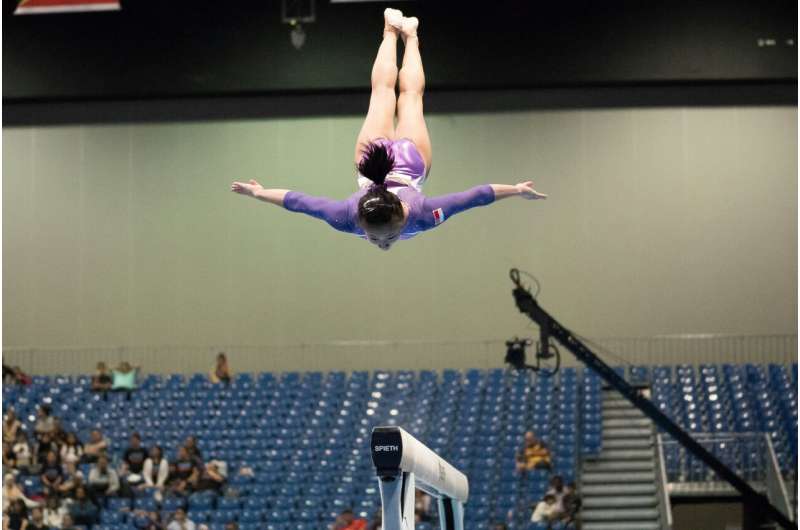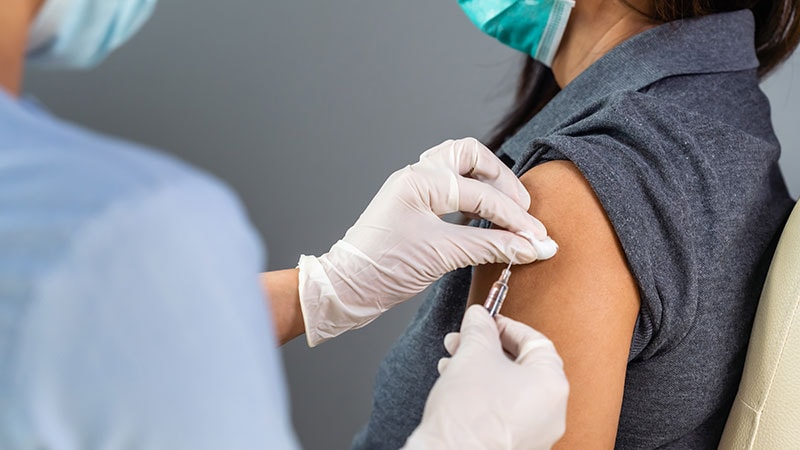
Credit: Unsplash/CC0 Public Domain
Gymnasts can create the illusion that gravity doesn’t exist. As they spring from one acrobatic skill into the next, they leave spectators little time to consider the strain they’re putting on their wrists, elbows, and shoulders. Nonetheless, a single back handspring exerts force equal to two to four times an athlete’s weight on their upper extremities.
The high-impact skills and young age at which many gymnasts start practicing add up to a large number of upper-extremity injuries. Until recently, however, sports medicine providers had little in the way of gymnastics-specific, evidence-based guidelines to support their patients’ safe and successful return to the sport.
“Gymnastics has a vast combination of skills and equipment that most medical providers don’t interact with on a regular basis,” says Andrea Bauer, MD, an orthopedic surgeon in the Hand and Orthopedic Upper Extremity Program at Boston Children’s Hospital.
A provider may feel like they’re hearing a foreign language when patients rattle off terms like “salto,” “Yurchenko,” “kip,” and “giant.” All the more reason, says Bauer, to make sure providers have the tools they need to help gymnasts return to their sport without further injury.
Experts in treating high-performance gymnastics
Together, Bauer, Elspeth Hart, PA-C, a gymnastics medicine specialist in Boston Children’s Sports Medicine Division, and Donald Bae, MD, an upper-extremity surgeon, have pooled their expertise to create a structured set of gymnastic-specific return-to-play protocols for five common upper-extremity injuries.
The three clinicians brought their experience of treating hundreds of upper-extremity gymnastics injuries to the task. “The protocols are the result of our specialized experience treating the upper limb through our high-volume practice and our insights into biomechanics and rehabilitation,” says Bae.
As a former Division I gymnast, Hart also contributed first-hand knowledge she’d gained while recovering from a variety of gymnastic injuries—knowledge she also used to create a gymnastics medicine subspecialty.
The protocols, published in the Journal of the Pediatric Orthopaedic Society of North America (JPOSNA), are broken down by level so that providers can tailor them to an athlete’s skill level. They also define when a gymnast is ready to progress to the next stage.
“The protocols are very specific regarding what to look for before a gymnast is ready to move to the next level,” says Hart, who has been using a version of the protocols with her patients for years.
For instance, the six-week hanging protocol, designed to strengthen athletes’ upper-body muscles and reduce strain on their wrists and elbows, begins with the gymnast hanging from a pull-up bar. Once they can do so three times for 60 seconds without pain, they can progress to a slightly more challenging level—and so on.
While some athletes balk at the gradual pace, the protocols provide a clear and structured path to returning to training and competition with less chance of injury. For providers who wish to become more familiar with the sport, the publication also includes a video of a young gymnast demonstrating foundational gymnastics skills.
Expanding gymnastics knowledge
The protocols are part of a broader effort within the Sports Medicine Division to raise awareness of the forces gymnasts place on their bodies and how to promote safe participation. In related research, the team investigated the use of wrist guards and supports in gymnastics and their effects on the joint.
Looking ahead, Hart, Bae, and Bauer plan to track gymnasts who follow the protocols to see how many successfully return to their sport without reinjury. Hart also plans to develop similar protocols for lower-limb injuries in collaboration with the Lower Extremity Program.
In the meantime, all three hope the protocols will benefit both providers and athletes. “We’re very lucky at Boston Children’s to have a gymnastics medicine program,” says Bae.
“We welcome our colleagues to apply these protocols and we welcome athletes, parents, and coaches to engage with us to keep these talented athletes healthy.”
More information:
Elspeth Hart et al, Common upper extremity gymnastics injuries and gymnastic specific return to play protocols, Journal of the Pediatric Orthopaedic Society of North America (2024). DOI: 10.1016/j.jposna.2024.100016
Citation:
From injury to backflips: A path to recovery for gymnasts (2024, August 12)
retrieved 19 August 2024
from https://medicalxpress.com/news/2024-08-injury-backflips-path-recovery-gymnasts.html
This document is subject to copyright. Apart from any fair dealing for the purpose of private study or research, no
part may be reproduced without the written permission. The content is provided for information purposes only.
Note: This article have been indexed to our site. We do not claim legitimacy, ownership or copyright of any of the content above. To see the article at original source Click Here













